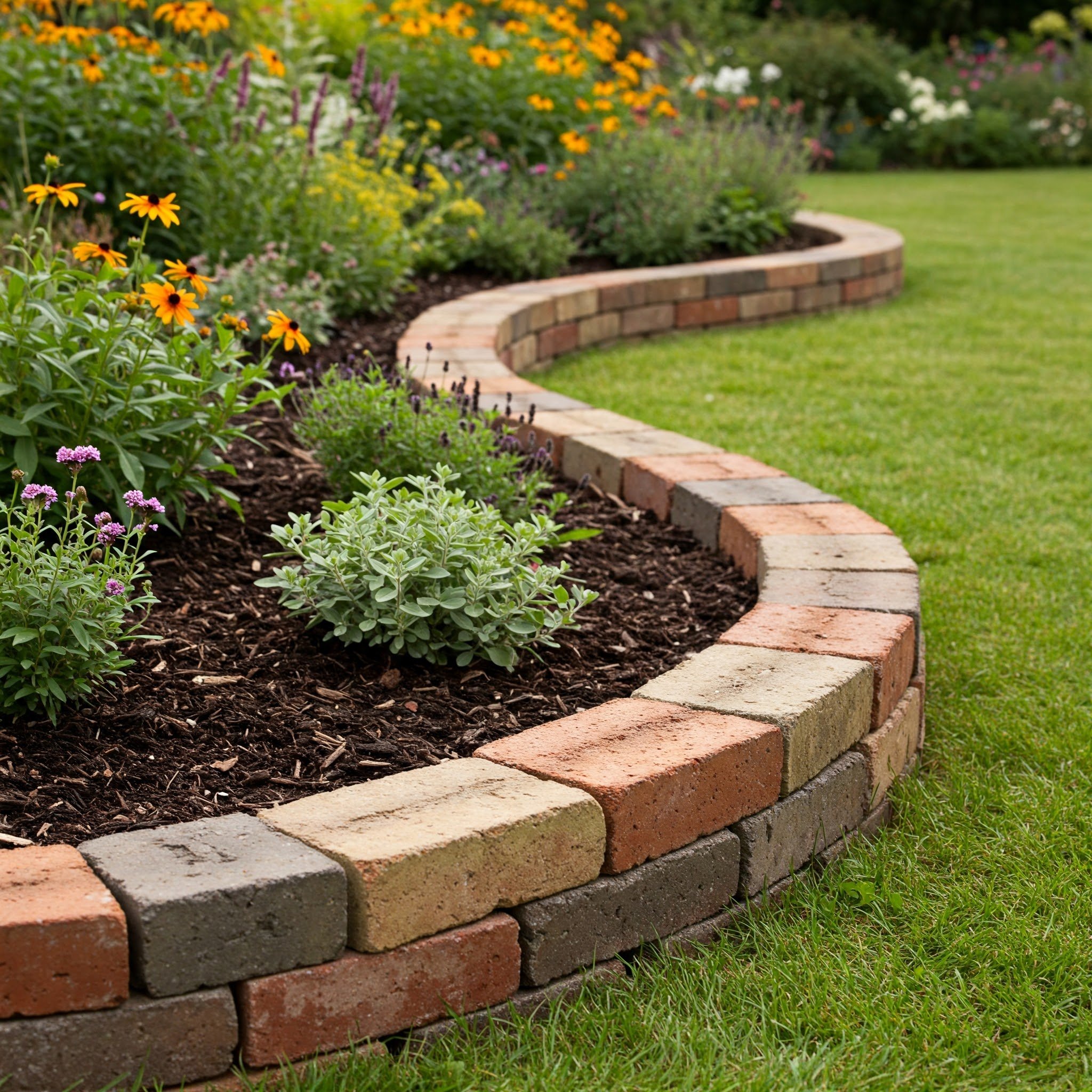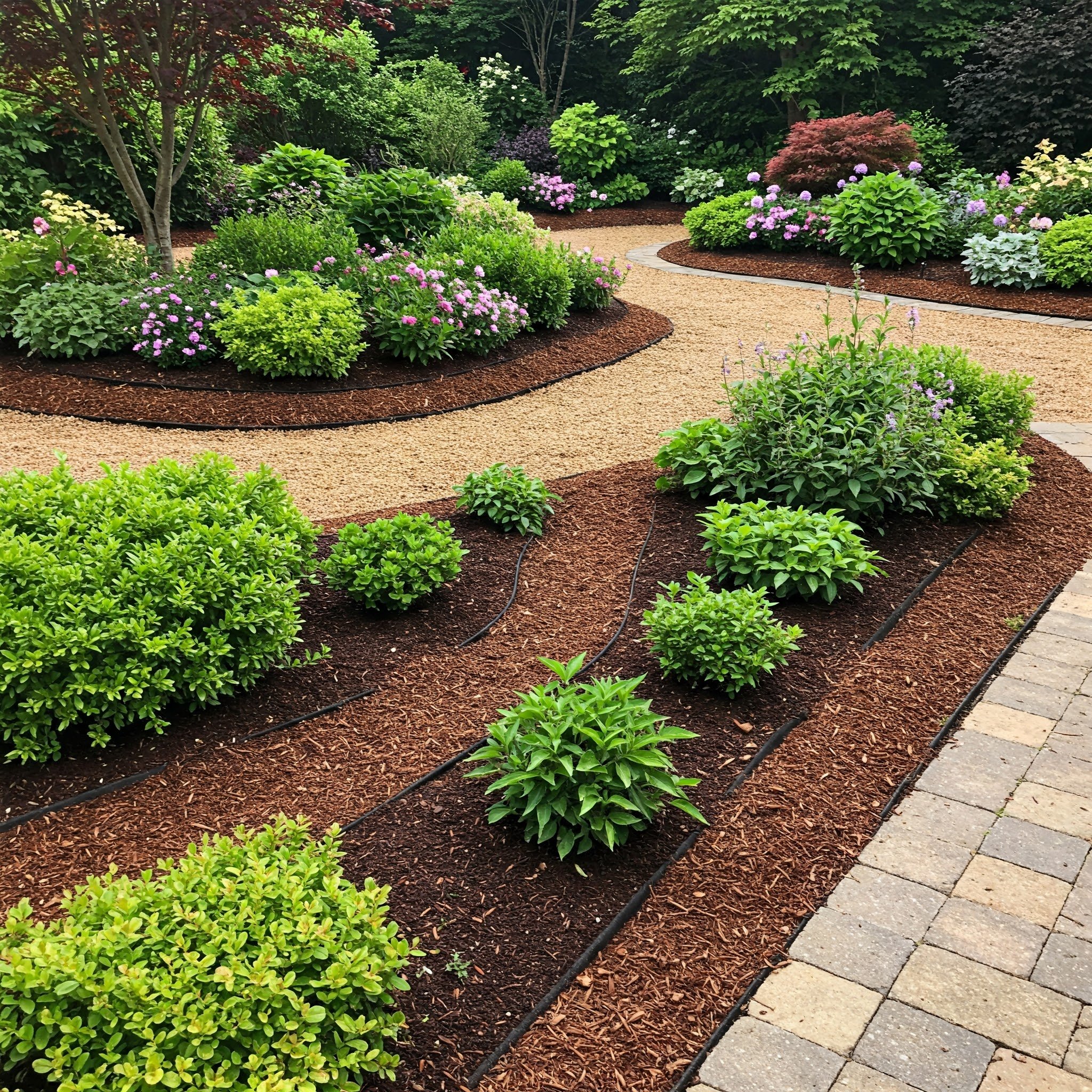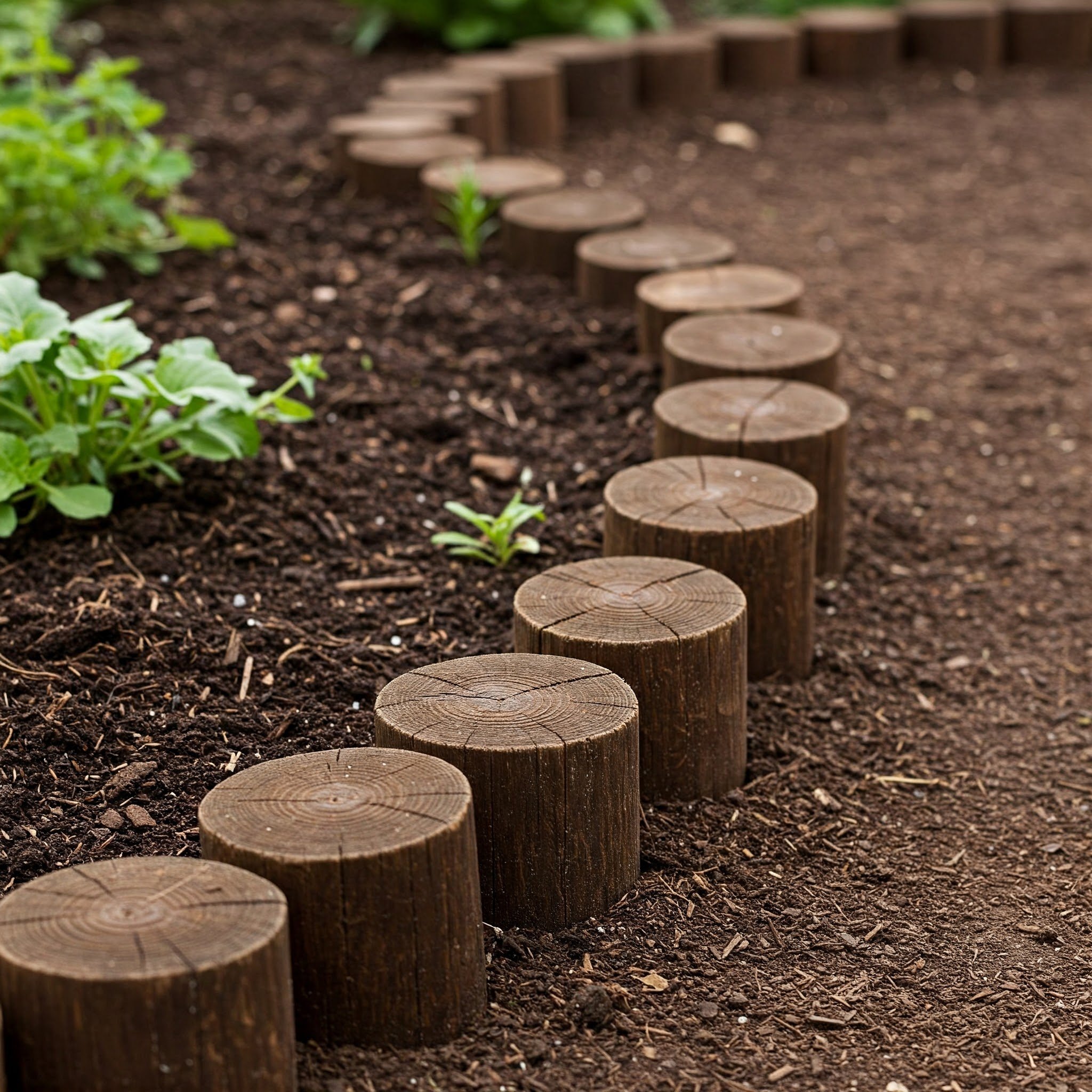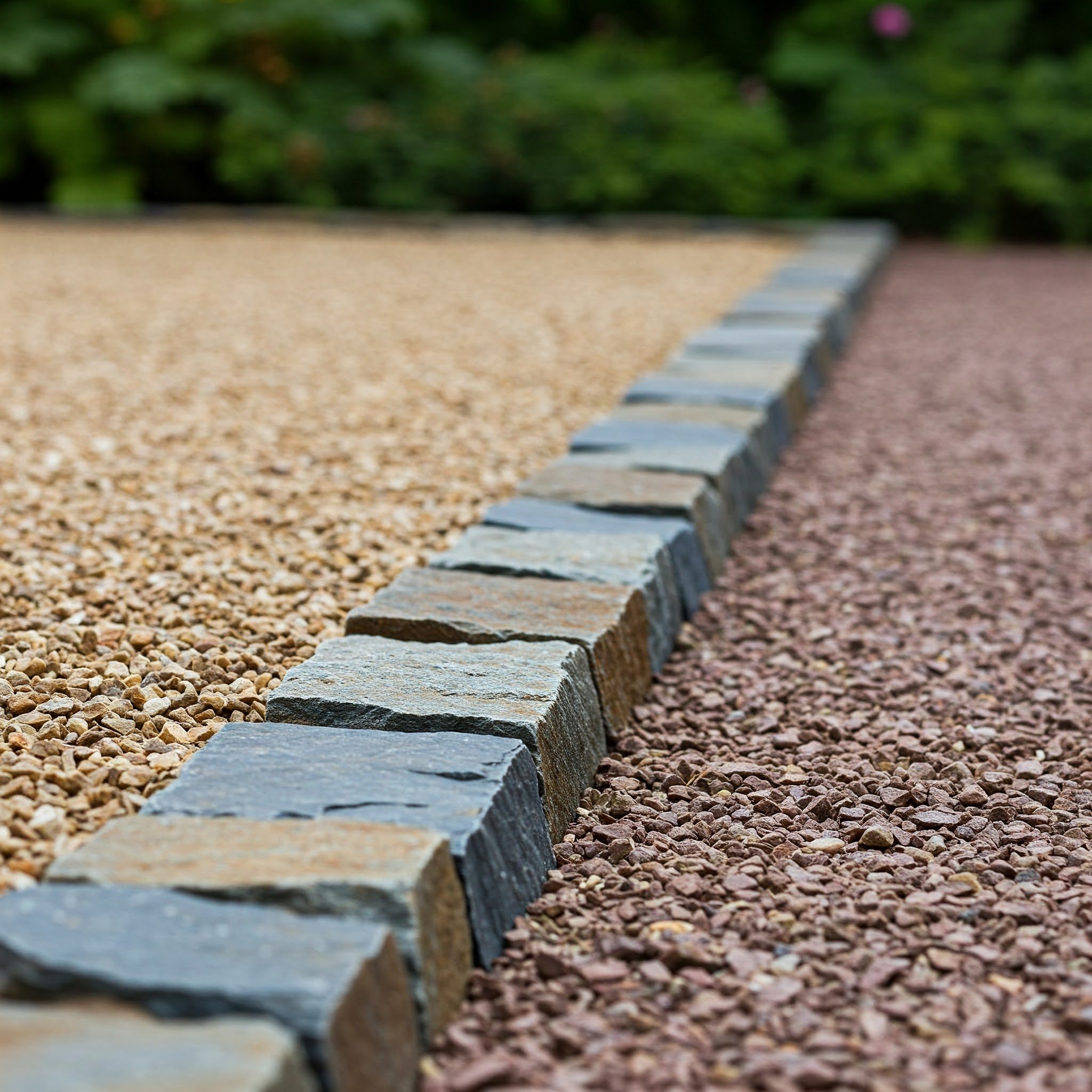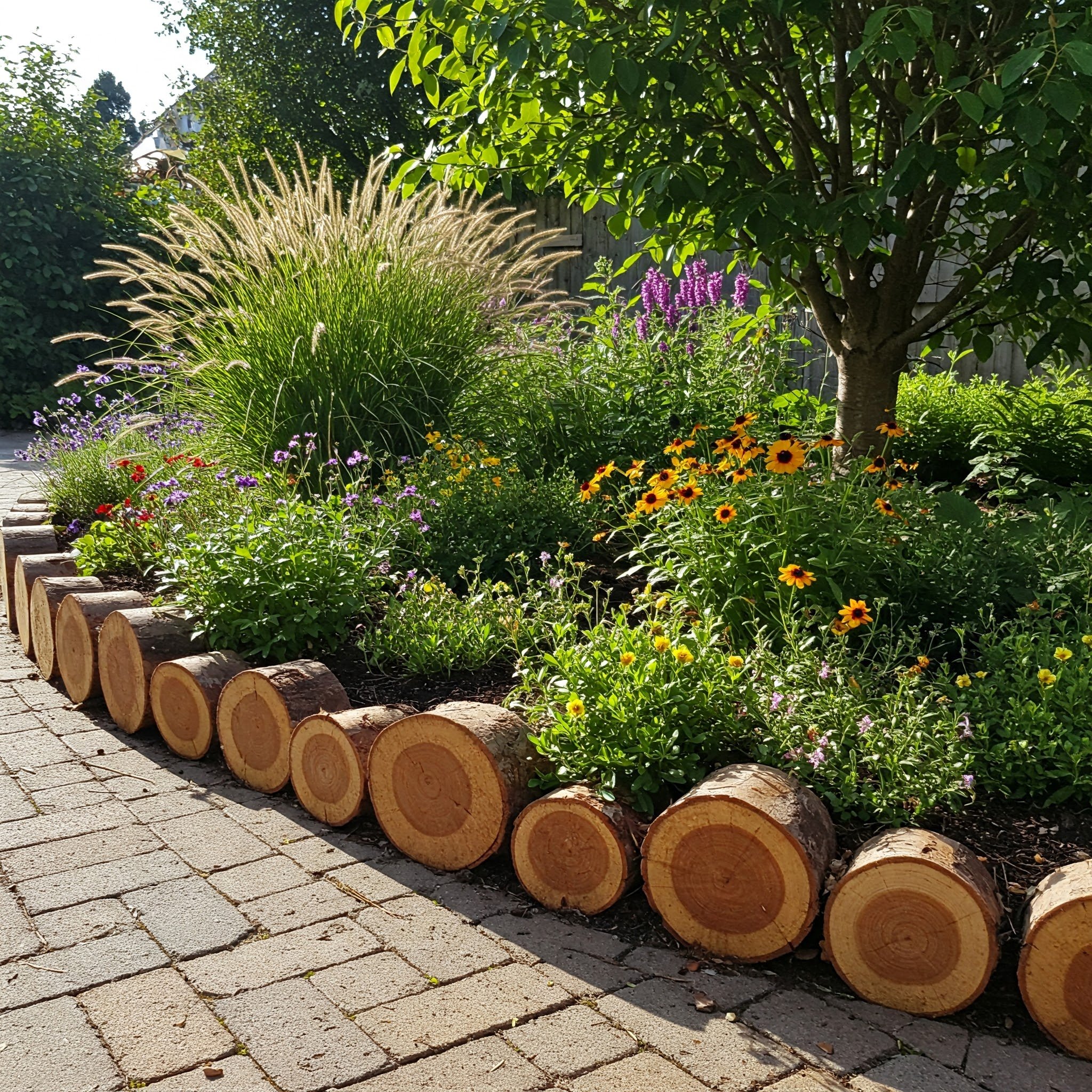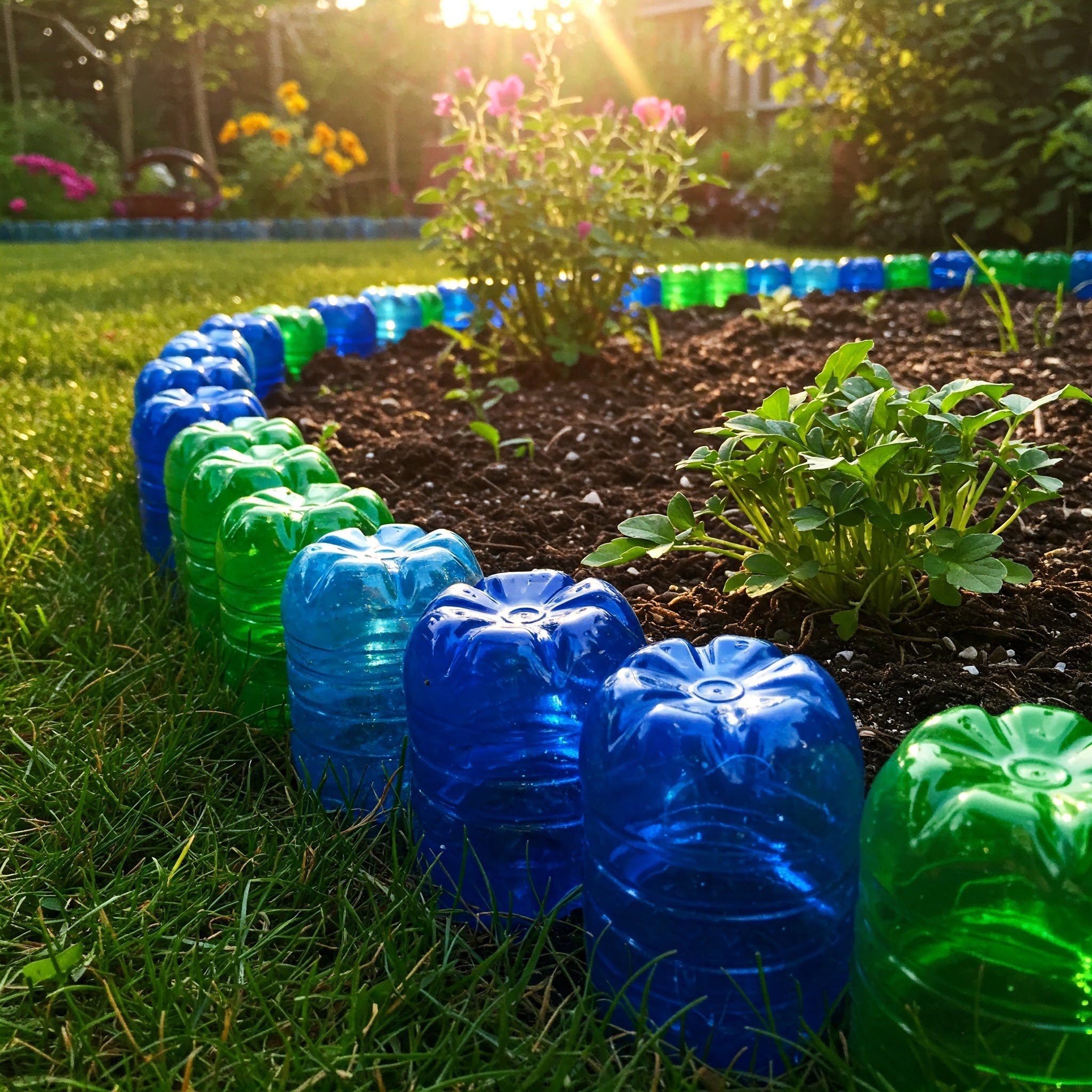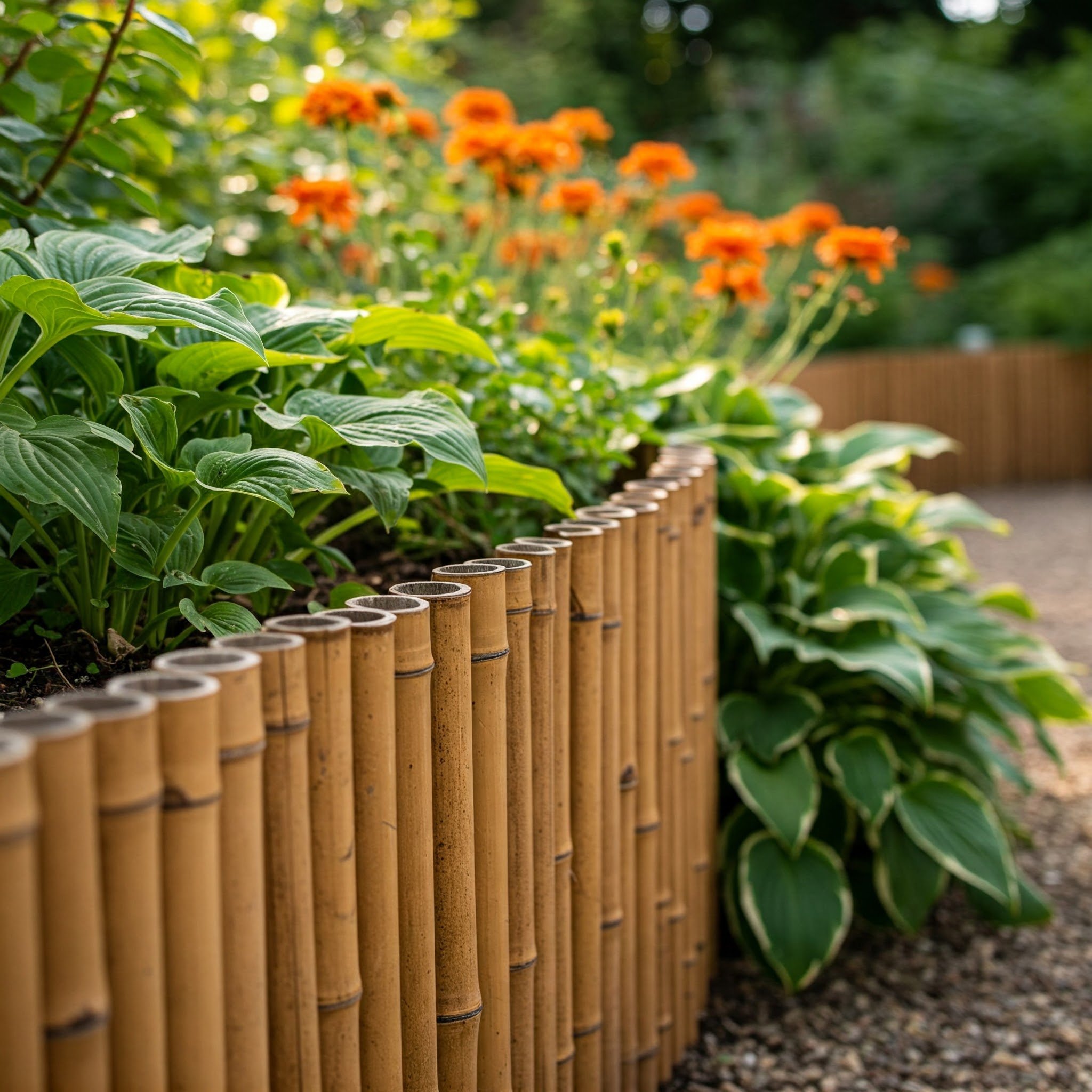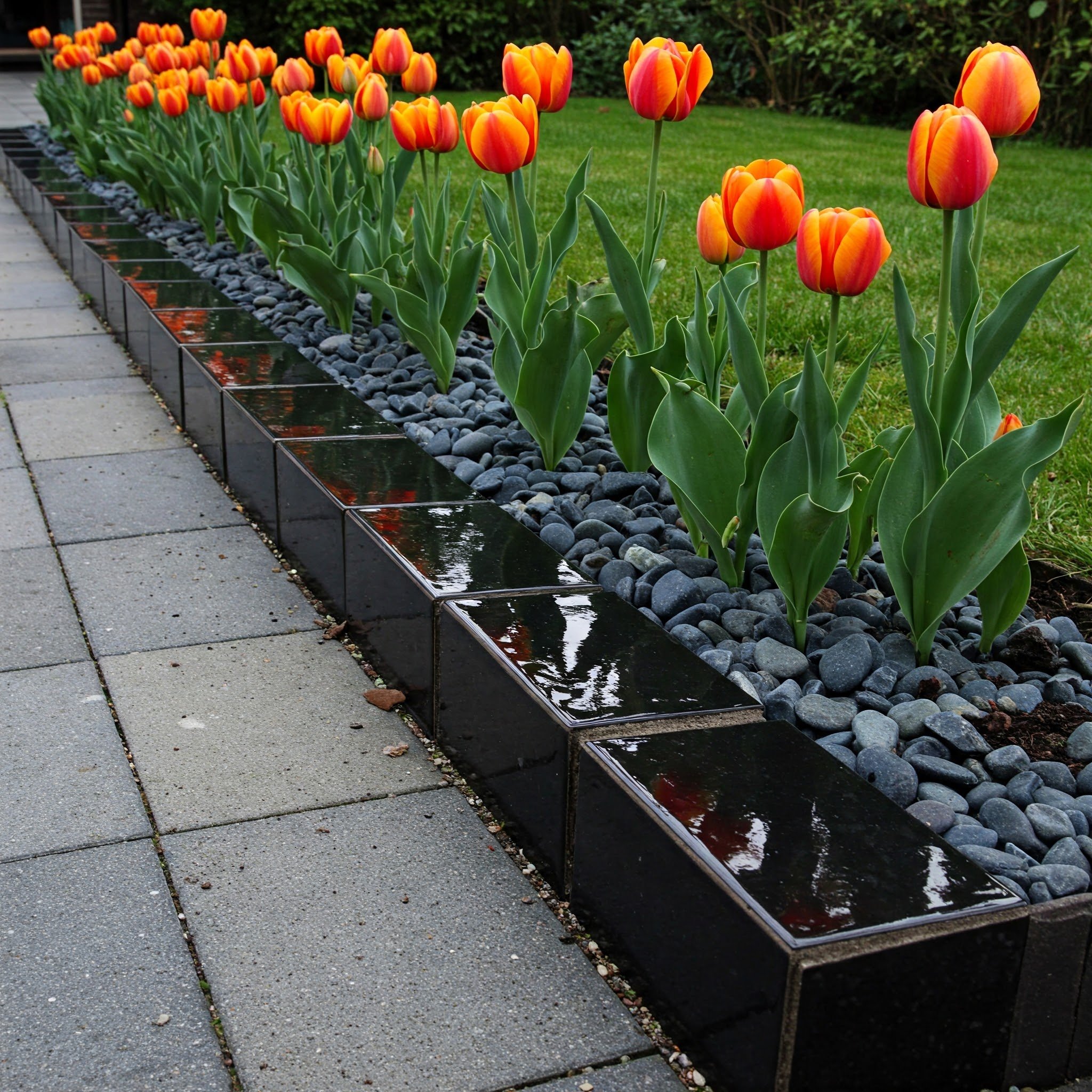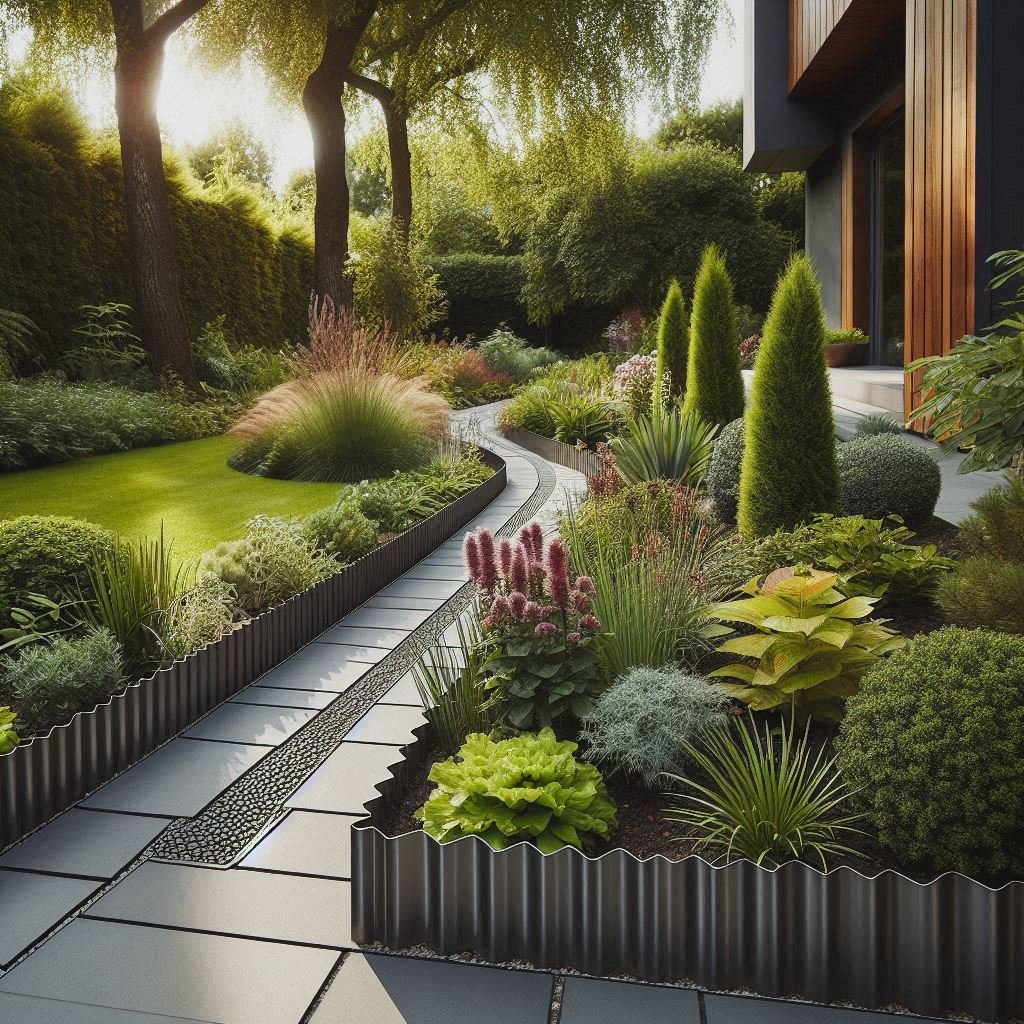15 Inexpensive Garden Edging Ideas for Your Yard
Discover 15 creative and inexpensive garden edging ideas that will add structure, style, and personality to your yard without breaking the bank. Transform your outdoor space today!
Ever looked at a beautifully defined flowerbed and thought, “I want that too!” but worried about the expense? You’re not alone. Garden edging can often seem like an afterthought, but it’s actually the secret ingredient that makes an outdoor space feel polished, organized, and brimming with personality. And guess what? You don’t have to spend a small fortune on fancy stone slabs or upscale metal barriers to achieve that magazine-ready look. There are countless thrifty and imaginative ways to create crisp boundaries around flowerbeds, walkways, and lawn edges. From repurposing everyday items to using natural materials, your yard can look picture-perfect while staying budget-friendly. In this article, we’ll outline 15 inexpensive garden edging ideas that will inspire you to let your creativity run wild. Ready to give your garden its own red-carpet moment?
1. Recycled Brick Edging
Recycled bricks are a top contender for anyone looking to strike the perfect balance between affordability and charm. The reason? Bricks bring a timeless, classic feel that complements almost any landscape design. You can often find them for free or at discounted prices by asking around construction sites or salvage yards—just be sure you’re getting permission. Once you’ve gathered your stash, sketch out where you want your edging to go. Placing bricks end-to-end in a trench is generally the simplest route, but there’s room for creativity. Try setting them diagonally or stack them at varying heights for a more textured look. Bricks are also easy to maintain; a quick rinse with a garden hose can bring back their rustic vibrancy. This makes them perfect for low-maintenance gardeners craving an elegant touch.
2. Plastic Lawn Edging Roll
Sometimes, simplicity is key. If you’re looking for a quick and straightforward way to create a defined border between your lawn and flowerbeds, plastic edging rolls are a lifesaver. They’re lightweight, cost-effective, and come in various colors, ensuring you can match them to your garden’s vibe. Installation usually involves unrolling the strip, securing it into a shallow trench, and anchoring it with stakes to keep it firmly in place. Think of it like drawing a boundary line—except the line is sturdy plastic preventing grass from creeping into your petunias. Plus, it’s flexible enough to bend around curved beds, so you’re not stuck with straight, rigid lines. With minimal digging required, you’ll find yourself breezing through the setup. And the best part? The plastic is durable enough to withstand most weather conditions.
3. Mulch Trenches
Mulch trenches might be the simplest edging solution you never knew you needed. Essentially, this approach uses the power of negative space. Instead of placing a physical barrier, you dig a narrow trench along the border of your garden bed and fill it with mulch. The slightly lowered line helps deter grass from marching into your flowerbeds, much like a moat around a castle. It’s a minimalist approach that still looks polished, especially if you choose mulch that contrasts nicely with your grass or plants. Hardwood mulch offers a rich, dark tone, while cedar mulch gives off a lighter, more rustic hue—and that wonderful cedar scent. The biggest upkeep is just topping up the mulch from time to time. No fancy materials needed, just a shovel, some elbow grease, and your choice of mulch.
4. Wooden Log Rounds
Do you want to give your garden a storybook vibe? Wooden log rounds might be exactly what you need. Slicing logs into rounds and placing them side by side along the edge of your garden can evoke the feeling of stepping into a fairy-tale woodland. The best part is that fallen trees or large branches can often be sourced for free—just be sure you’ve got permission to use them. Once cut, treat the wood with a weatherproof sealant so it can withstand moisture and pesky insects. You can arrange these rounds snugly together for a tight boundary or space them out slightly to let plants peek through. Over time, the wood’s natural variations and any moss or lichen that forms only enhance the organic charm of this edging style.
5. Gravel and Stone Strip
A gravel or stone strip works like a stylish frame around your beds. Imagine a picture frame that ties the whole painting together—that’s what gravel does for your flowerbeds and lawn. Go for pea gravel if you want a more polished, uniform look; or choose river rocks for a natural, textured appearance. Start by digging a shallow trench, laying down landscaping fabric to keep weeds at bay, and then filling it with your chosen rocks. If you’re feeling adventurous, mix different sizes or shades to create a mosaic effect. Maintenance mainly involves raking it smooth every now and then and occasionally topping it up if the stones scatter. This method not only keeps grass from sneaking into your beds but also offers a clean, modern contrast to lush plant life.
6. Reclaimed Pallet Wood Border
Pallets aren’t just for shipping goods; they can be your ticket to an eye-catching, cost-effective garden border. Start by sourcing free or cheap pallets from local stores or online community boards. Then break them down into planks, sanding them to remove splinters. You can keep the natural, rustic look or add a splash of paint to match your garden’s color scheme. When it comes to installation, there are plenty of creative paths to take: stand planks vertically for a fence-like edge, or cut them into smaller pieces and install them horizontally for a more subtle boundary. Either way, the raw, woodsy texture of pallet planks offers a welcoming, cottage-style flair. Just don’t forget to treat or seal them, especially if you live in a rainy climate, to extend their lifespan.
7. Upcycled Cinder Blocks
Cinder blocks may not scream “chic” at first, but they’re a hidden gem for garden edging on a budget. They’re sturdy, easy to position, and can be creatively customized. You can paint them with bright colors if you want a whimsical vibe, or stick to muted tones for a modern, minimalist effect. One trick is to place them so that the hollow openings face upward; then fill those spaces with soil and pop in some succulents or small flowers. Instant mini-planters! Another option is aligning them lengthwise to form a clean boundary around beds. Because they’re modular, you can easily reconfigure them if you decide to tweak your yard design later. It’s like having giant building blocks for adults—no wonder it feels so fun and creative to work with them.
8. Terracotta Pot Edge
Terracotta pots aren’t just for individual plants—they can also line an entire border, adding a charming visual break between your lawn and flowerbeds. Think of it as creating a parade of terracotta soldiers around your garden, each standing guard over your precious blooms. You can flip the pots upside down for a uniform look, or keep them right-side up and fill them with more greenery or even playful trinkets. The key is to choose pots of a similar size so the edging looks cohesive. If you’d like a pop of color, terracotta pots are easy to paint, or you can leave them in their natural earthy shade for a Tuscan-inspired feel. Over time, a hint of patina or moss might develop, lending even more character to this unique edging approach.
9. Metal Sheet Edging
If you’re after a sleek, modern finish without splurging on specialty garden materials, metal sheet edging could be just your style. It’s thin, unobtrusive, and bold enough to create a crisp line between your lawn and flowerbeds. You can typically find thin metal sheets in home improvement stores, sometimes sold in rolls or strips. A bit of elbow grease is needed: measure your desired length, cut it with tin snips (carefully!), and then insert it into a shallow trench. Gently hammer it into place so it sits firm and flush with the ground. Galvanized steel is a popular pick because it’s resistant to rust. However, if you prefer a weathered, rustic charm, untreated steel can develop a patina over time. Maintenance is minimal—just keep an eye out for any sharp edges.
10. Natural Log Slices
Picture cookie-shaped slices of wood lining your garden beds, giving your yard a playful, enchanted-forest vibe. These “wood cookies” are what you get when you cut a log into horizontal slices rather than vertical rounds. Each slice reveals unique growth rings, a subtle reminder of time’s passage. Acquiring them can be as simple as finding a downed tree or requesting some from a local sawmill. Like any wood-based edging, it’s crucial to treat them to combat moisture and insects. Arranging them slightly overlapping can create a puzzle-piece effect, while leaving small gaps between each piece feels a bit more natural. Because of their flat tops, these slices can also double as stepping stones or a surface to rest small planters. Every log slice border quickly becomes a conversation starter for curious visitors.
11. Gabion-Style Edging
Gabions are wire cages typically filled with rocks for retaining walls, but you can scale the concept down to form unique, edgy borders around your garden. It’s like turning your edging into a miniature fortress. Instead of large wire cages, you can find or make smaller ones specifically for garden use. Fill them with stones, pebbles, or even recycled glass if you love a pop of color. The great thing about gabion-style edging is its durability—wire cages hold everything firmly in place, even in rough weather. If you like to push boundaries, consider mixing in driftwood pieces or brightly painted rocks for an artsy spin. While it takes a bit more effort to set up, the result is a highly distinctive border that can seamlessly tie in with modern or rustic garden themes.
12. Plastic Bottle Edging
Who would’ve thought your recycling bin could hold the key to a charming, eco-friendly garden border? Plastic bottle edging not only helps the environment by repurposing trash, but it also adds a touch of quirkiness to your yard. Start by collecting bottles of the same shape—like soda or water bottles—then remove labels and fill them with sand or soil for extra stability. Bury them neck-down in a trench so the bottom part of the bottle is visible at the surface. For added fun, you can paint the exterior with bright colors or even whimsical patterns. Arranging the bottles snugly together helps keep weeds at bay and creates a subtle barrier for lawn creeping. The best part? You can easily replace damaged bottles without uprooting the entire border.
13. Bamboo Borders
Bamboo is the MVP of sustainable gardening materials. It grows rapidly, is incredibly strong, and has a sleek, natural appearance that meshes beautifully with lush greenery. Whether you purchase bamboo poles or harvest them from a friend’s grove, you’ll want to cut them down to relatively uniform lengths. Insert these poles vertically in a shallow trench or secure them together horizontally to form a mini fence. Bamboo’s neutral hue complements a Zen-inspired garden or even a tropical-themed backyard. With some weatherproof coating, it can last quite a while—though a bit of maintenance may be needed every few years to keep it in prime shape. If you love the idea of bridging style and sustainability, bamboo borders bring an exotic twist while serving as a robust perimeter for your flowerbeds.
14. Herb Planter Edge
Ever think about blending function and beauty along your garden’s perimeter? An herb planter edge lets you do just that. Instead of setting up a physical barrier, you create a living wall of herbs—like thyme, rosemary, or mint—growing in a neat row. This acts as an informal edge, discouraging grass from invading while offering an aromatic treat every time you pass by. To get started, prepare the soil and plant herb seedlings close together in a straight line around your bed. This natural boundary is especially stunning when the herbs flower, adding bursts of color along the border. Of course, the biggest upside is the easy access to fresh herbs for your kitchen. Just snip what you need, and let the edge keep flourishing in both form and function.
15. Woven Branch Fence
If you’ve got a knack for crafts or simply love a cottage-core aesthetic, weaving branches to create a mini fence could be your next favorite weekend project. Gather pliable branches—willow, hazel, and even thin, flexible twigs from your yard can work. First, anchor vertical stakes evenly along the garden’s edge. Then start weaving the branches horizontally in and out of each stake, similar to making a basket. The result? A rustic, storybook boundary that exudes charm. Don’t worry if your weaving isn’t perfect—imperfections often give it that cozy, handmade feel. Over time, the fence may fade to a softer tone, blending even more seamlessly with the surrounding landscape. To ensure longevity, treat the stakes with a rot-resistant coating, especially if your climate is damp. Embrace the natural artistry!
Conclusion
Garden edging doesn’t need to break the bank or be a massive DIY undertaking. It can be a personal statement, reflecting your creativity, resourcefulness, and love for the outdoors. From upcycling materials like plastic bottles and cinder blocks to creating minimalist boundaries with mulch and gravel, there’s an edging style for every taste. By blending practical solutions with imaginative designs, you not only give your garden a crisp, organized look but also infuse it with a touch of your own personality. Whether you love the soft charm of wooden log rounds or the sleek modernity of metal sheets, each idea holds the potential to elevate your yard into something that truly stands out. Now, grab your shovel, gather your materials, and start edging your way to a backyard paradise!
Read next: 15 Garden Edging Ideas to Transform Your Space
Frequently Asked Questions
How do I know which edging idea will best suit my garden’s theme?
Consider your garden’s overall style and your personal taste. If you lean toward rustic, wooden or woven branches might be ideal. For modern aesthetics, try metal or minimalist gravel.Do I need special tools for most of these edging projects?
Generally, you’ll need basic gardening gear—like a shovel, a rubber mallet, and perhaps a saw. More specialized ideas (like metal sheets) might require tin snips or protective gloves.Can I mix and match different edging styles in the same yard?
Absolutely! You can create distinct zones by using one style around a vegetable garden and another around a flower bed. Just ensure the transition between edges looks intentional.How often should I maintain these low-cost edging options?
Most require minimal upkeep, like topping up gravel or reapplying wood sealant. Check them each season to handle any shifting or wear and tear early on.Can I switch out an edging type without damaging my plants?
Yes. Plan your project carefully and dig with care around your plant roots. Edging typically sits in a shallow trench, so just remove the old material and install the new one gently.

